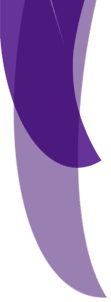Acetylcholine: neurotransmitter released from vesicles in the end plates of neurons, which makes the postsynaptic membranes more permeable to Na+ ions
Action potential: the voltage difference across a nerve cell membrane when the nerve is excited
Adrenal cortex: outer region of the adrenal gland that produces glucocorticoids and mineralocorticoids
Adrenal medulla: found at the core of the adrenal gland, the adrenal medulla produces epinephrine and norepinephrine
Afferent arterioles: small branches that carry blood to the glomerulus.
Aldesterone: hormone that increases Na+ reabsorption from the distal tubule and collecting duct
Anabolic steroids: substances that are designed to mimic many of the muscle-building traits of the sex hormone testosterone
Antidiuretic hormone (ADH): causes the kidney to increase water reabsorption
Axon: extension of cytoplasm that carries nerve impulses away from the cell body
Bowmans capsule: cuplike structure that surrounds the glomerulus.
Calcitonin: hormone produced by the thyroid gland that lowers calcium levels in the blood
Central nervous system (CNS): the bodys coordinating center for mechanical and chemical actions; made up of the brain and spinal cord
Cerebellum: part of the hindbrain that controls limb movements, balance, and muscle tone
Cerebral cortex: outer lining of the cerebral hemispheres
Cerebrospinal fluid: cushioning fluid that circulates between the innermost and middle membranes of the brain and spinal cord; it provides a connection between neural and endocrine systems
Cerebrum: largest and most highly developed part of the human brain, which stores sensory information and initiates voluntary motor activities
Cholinesterase: enzyme, which breaks down acetylcholine that is released from postsynaptic membranes in the end plates of neurons shortly after acetylcholine
Collecting duct: tube that carries urine from nephrons to the pelvis of a kidney.
Contractile vacuole: a structure in unicellular organisms that maintains osmotic equilibrium by pumping fluid out from the cell.
Corpus callosum: nerve tract that joins the two cerebral hemispheres
Corpus luteum: a mass of follicle cells that forms within the ovary after ovulation; secretes estrogen and progesterone
Cortex: outer layer of the kidney.
Cortisol: hormone that stimulates the conversion of amino acids to glucose by the liver



